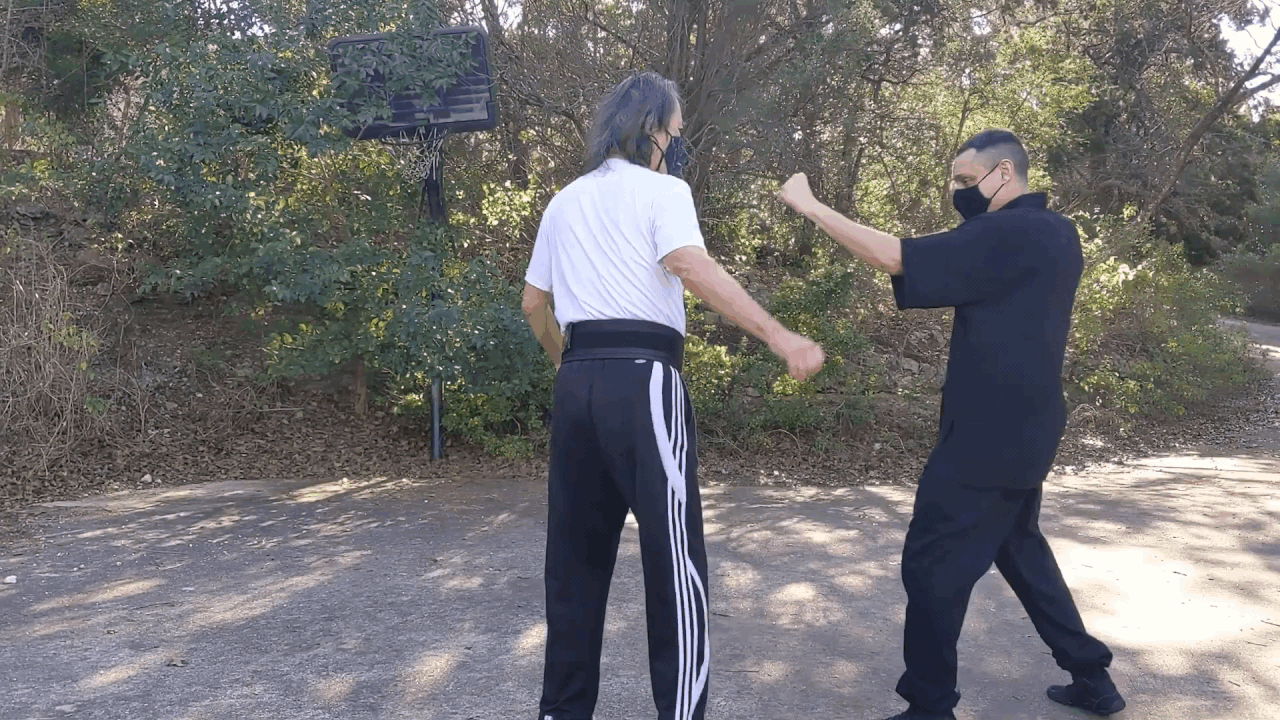The upper arm must rotate into the shoulder. Most people allow the upper arm to pull out of the shoulder
Are you referring to internal rotation of the upper arm within the shoulder socket?
Last edited:
Follow along with the video below to see how to install our site as a web app on your home screen.
Note: This feature may not be available in some browsers.
The upper arm must rotate into the shoulder. Most people allow the upper arm to pull out of the shoulder
The upper arm must rotate into the shoulder. Most people allow the upper arm to pull out of the shoulder
Was this something you learnt specifically in Lo Kwai wck? or was it from your Yip Man wck teachers?
The upper arm must rotate into the shoulder. Most people allow the upper arm to pull out of the shoulder
what’s your opinion?
In my opinion, that hook would be better used to strike the back of his elbow or his wrist. That potentially takes his arm out of the fight, if you land it well, and takes a lot of the fight out of him. At that point, either the fight is over, or you are able to make your escape, or you follow with another strike to an exposed target such as the face or body since his arm is dropped, and end it in that way.One clip can only show one example.
Here is a different example that
- You use a hook punch and try to grab your opponent's wrist, your opponent rotates his arm to avoid contact, and hook punch back at you.
- You change your hook into a back fist, arm wrap.
When you throw a hook punch as a set up, you have to expect different responds (either make contact, or doesn't make contact).

- You throw a right hook punch. Your opponent rotates his left arm to avoid contact, and left hook punch back at you.I think it overcomplicates the encounter.

Use what he gives you. Hurt his arm.
Lots of movement to try and set something up. Just hit what is there. Other opportunities will follow.- You throw a right hook punch. Your opponent rotates his left arm to avoid contact, and left hook punch back at you.
- You change your right hook punch into a right back fist, arm wrap.
Your right hook, right back fist can be used to set up "arm wrap".
Your left hand will have the following options at this moment.
1. Left cross.
2. Left uppercut.
3. Left overhand.
4. Left hook.
It depends on where and how your opponent's right arm is doing at that moment. As long as you can knock your opponent down, any option will be a good option.
This is why the following 4 combos are part of my training:
- right hook, right back fist, left cross
- right hook, right back fist, left uppercut
- right hook, right back fist, left overhand
- right hook, right back fist, left hook
IMO, the striking art is more interested to train this way - use 1, 2 to set up 3.

It's very difficult to integrate striking art and throwing art if you don't have a plan. Most of the throw will require a leading arm wrapping (such as a hip throw).Lots of movement to try and set something up. Just hit what is there. Other opportunities will follow.
Maybe you don’t need throwing art? Maybe how you are trying to Mix them isn’t optimal. Sounds to me like you want to get into a throw. Maybe change your mental processing on this and just look for what works, whether a throw or a strike, without trying for specifically one or the other. Do whatever presents, even if it’s not what you hoped for.It's very difficult to integrate striking art and throwing art if you don't have a plan. Most of the throw will require a leading arm wrapping (such as a hip throw).
It's better to make something to happen than to wait for something to happen.Do whatever presents, even if it’s not what you hoped for.
It's better to make something to happen than to wait for something to happen.
Something has already happened: he gave you his arm. Destroy it. THEN destroy his head or body, when he can’t defend with his arm.It's better to make something to happen than to wait for something to happen.
I don’t think anyone gets to do either 100%.It's better to make something to happen than to wait for something to happen.
So we are punching peoples arms now?
Didn't you do that in about sixth grade? You know, trading punches to the shoulder???
This is a wing chun forum and IMO what you have demo'd isn't WC.
I assume OP also wanted to discussTo be a complete martial art, however, you also need to have a long range game and a good grappling game.
